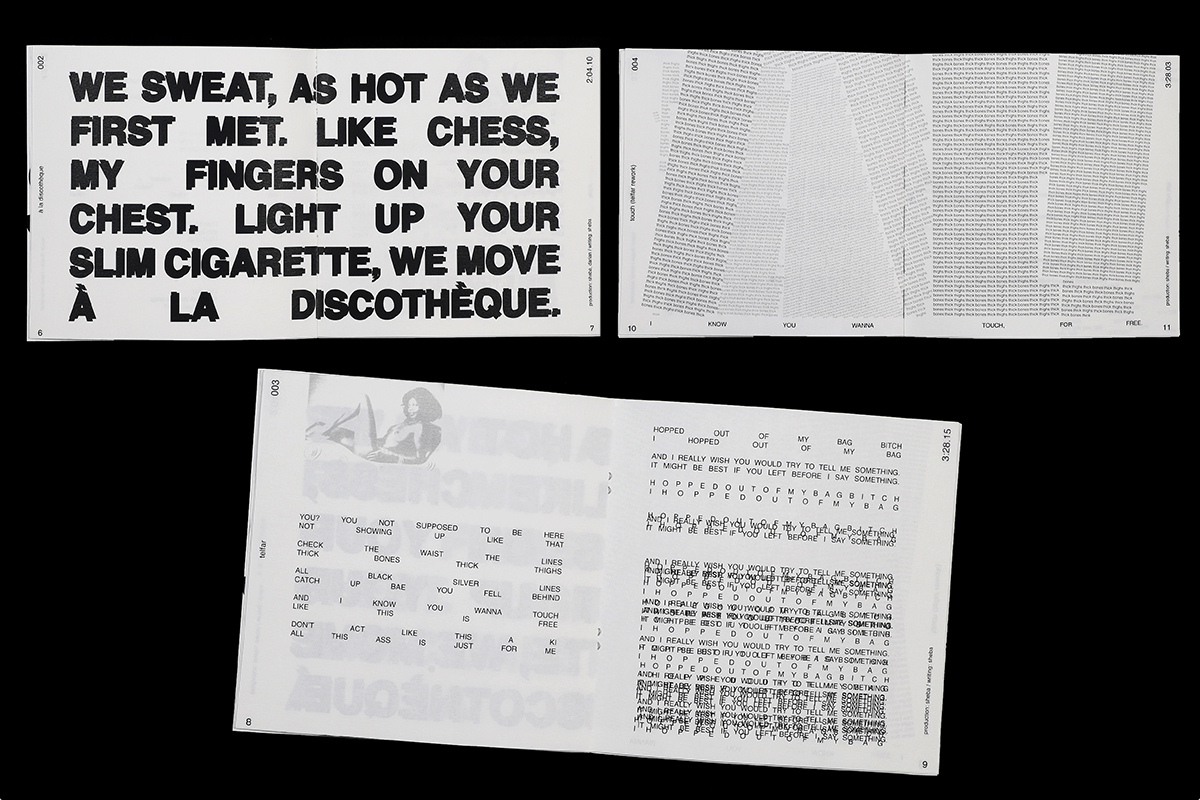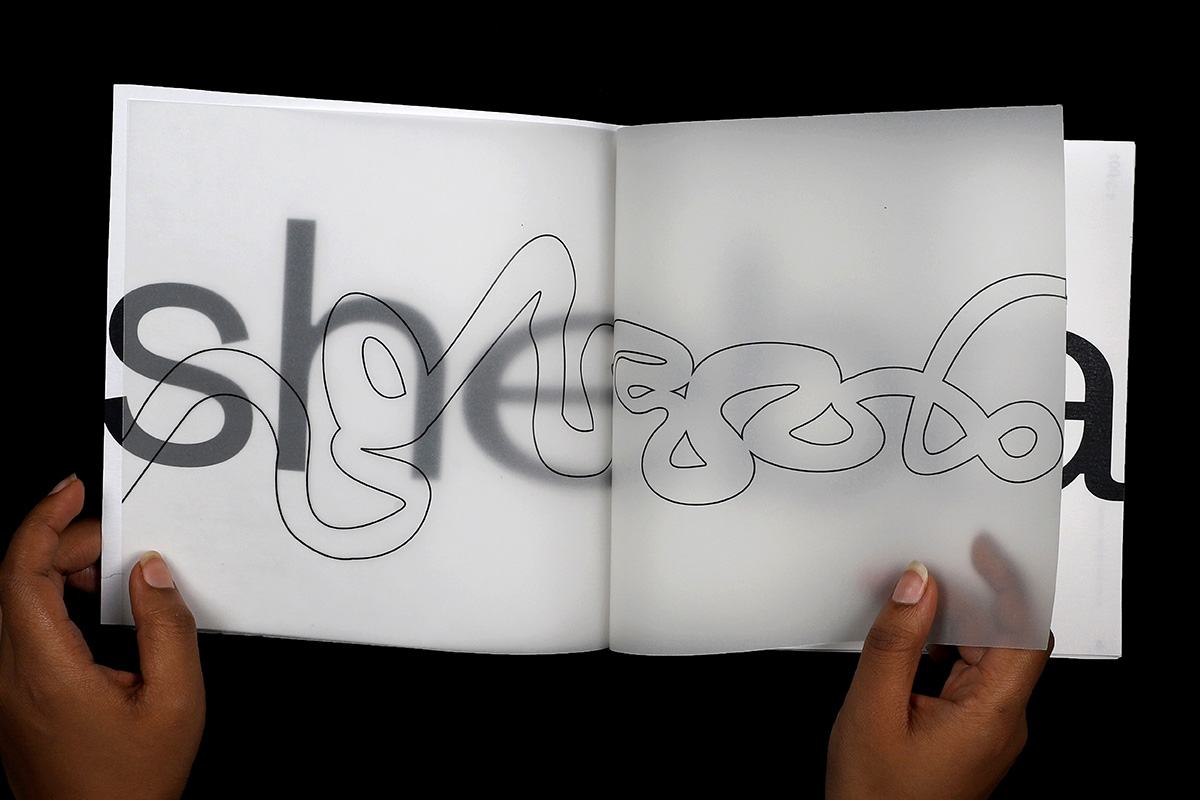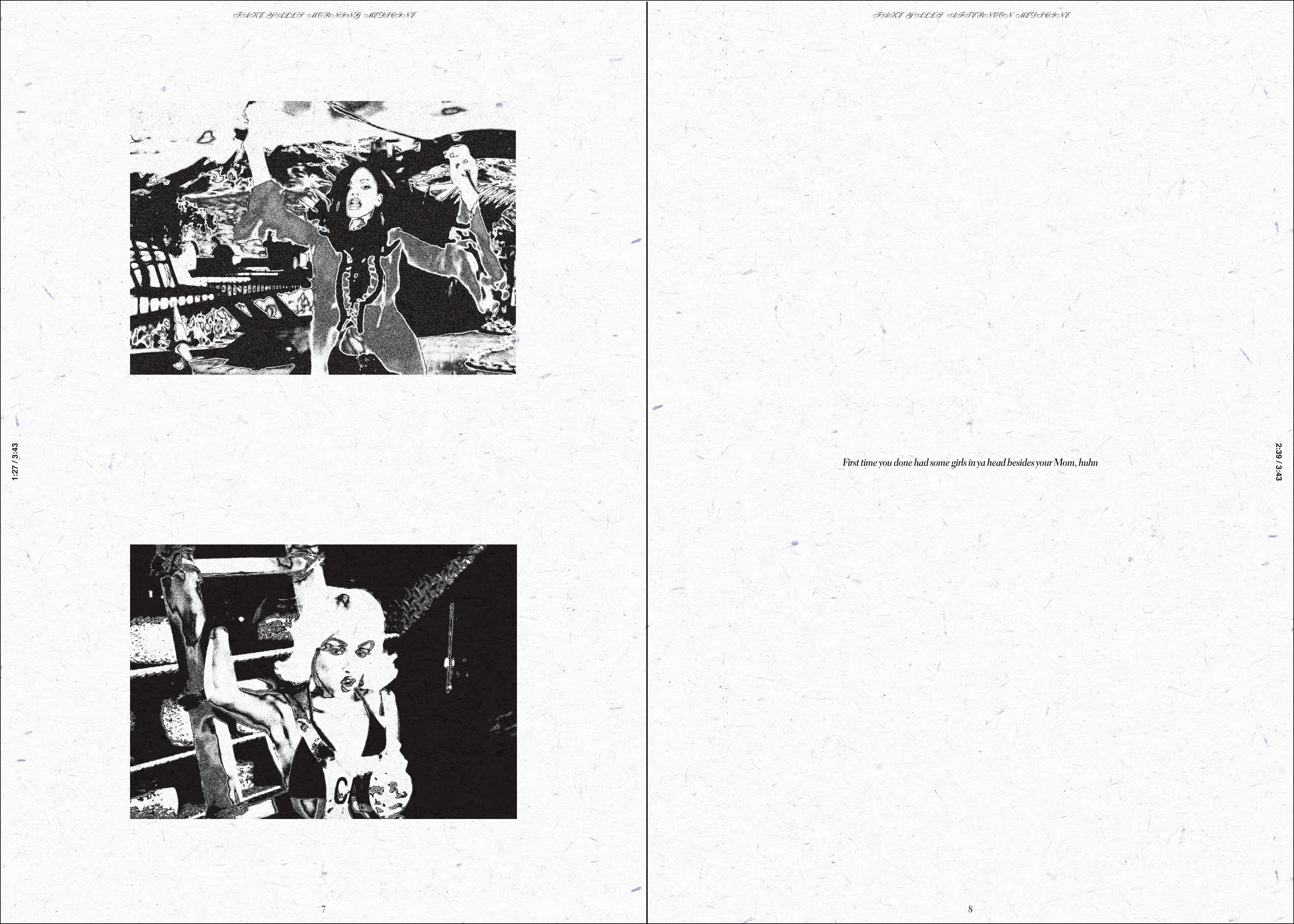






Identity design and digital flyer for Blu.B’s HI COTTON BALL.







Identity design and digital flyer for Blu.B’s HI COTTON BALL.







My thesis is an exploration of the connections between design and music, subculture, and community. As a producer and DJ, underground techno and the electronic music scene has been fundamental to my experience in New York City. Over the past two years, the scene has changed - it has risen out of the countercultural space into the mainstream, becoming more commodified and less communal. This has also led to a demographic change in what was once a queer and Black community, with those members being pushed out either by inaccessibility of tickets or unsafe venues. To confront this issue, I asked how design could be used to differentiate my identity as a musical artist within this newly commodified community, while also creating a system to protect the original core group.
I used my musical alias, Sheba, and the minimal aesthetics of early house and techno music. Some visual choices were made based on words I associate with Sheba: mystic, sexual, anonymous, androgynous. The identity system uses methods that encourage an “in crowd” and an “out crowd,” and entry points where members of the out crowd can be let in. The Sheba persona had to be kept consistent throughout the system as well. The result is a collection of printed materials, digital graphics, and letterforms that explore different ways Sheba can interact with the audience, through either coded language or sharing artifacts of the music.
This projects aims to encourage methods of resistance to the homogenization and commodification of (counter-)cultures in the coming years. Through Sheba, I suggest that one of these methods is the creation of anonymous personas and coded graphics.
I used my musical alias, Sheba, and the minimal aesthetics of early house and techno music. Some visual choices were made based on words I associate with Sheba: mystic, sexual, anonymous, androgynous. The identity system uses methods that encourage an “in crowd” and an “out crowd,” and entry points where members of the out crowd can be let in. The Sheba persona had to be kept consistent throughout the system as well. The result is a collection of printed materials, digital graphics, and letterforms that explore different ways Sheba can interact with the audience, through either coded language or sharing artifacts of the music.
This projects aims to encourage methods of resistance to the homogenization and commodification of (counter-)cultures in the coming years. Through Sheba, I suggest that one of these methods is the creation of anonymous personas and coded graphics.







My thesis is an exploration of the connections between design and music, subculture, and community. As a producer and DJ, underground techno and the electronic music scene has been fundamental to my experience in New York City. Over the past two years, the scene has changed - it has risen out of the countercultural space into the mainstream, becoming more commodified and less communal. This has also led to a demographic change in what was once a queer and Black community, with those members being pushed out either by inaccessibility of tickets or unsafe venues. To confront this issue, I asked how design could be used to differentiate my identity as a musical artist within this newly commodified community, while also creating a system to protect the original core group.
I used my musical alias, Sheba, and the minimal aesthetics of early house and techno music. Some visual choices were made based on words I associate with Sheba: mystic, sexual, anonymous, androgynous. The identity system uses methods that encourage an “in crowd” and an “out crowd,” and entry points where members of the out crowd can be let in. The Sheba persona had to be kept consistent throughout the system as well. The result is a collection of printed materials, digital graphics, and letterforms that explore different ways Sheba can interact with the audience, through either coded language or sharing artifacts of the music.
This projects aims to encourage methods of resistance to the homogenization and commodification of (counter-)cultures in the coming years. Through Sheba, I suggest that one of these methods is the creation of anonymous personas and coded graphics.
I used my musical alias, Sheba, and the minimal aesthetics of early house and techno music. Some visual choices were made based on words I associate with Sheba: mystic, sexual, anonymous, androgynous. The identity system uses methods that encourage an “in crowd” and an “out crowd,” and entry points where members of the out crowd can be let in. The Sheba persona had to be kept consistent throughout the system as well. The result is a collection of printed materials, digital graphics, and letterforms that explore different ways Sheba can interact with the audience, through either coded language or sharing artifacts of the music.
This projects aims to encourage methods of resistance to the homogenization and commodification of (counter-)cultures in the coming years. Through Sheba, I suggest that one of these methods is the creation of anonymous personas and coded graphics.







“E” is a reader investigating comments left on Lil Bow Wow’s Take Ya Home music video by the google account “Eisaiah White.” White’s account posts an array of comments referencing drug use, possible kidnapping, violence, sex, women, and family dynamics. It is unclear who White is, yet after researching his name across different platforms, the corresponding Facebook account was found. On the profile, there is only a QR code that directs to a set of coordinates in Flint, Michigan.
For this project, I treated White as a ghost, and used this book to compile traces left by them as “hauntings.” The images used are clips from the Lil Bow Wow video, with the exception of the map and QR code on the first spread, which are sourced from White’s facebook page.
The aims of this project were to investigate online privacy and publicity, surveillance and voyeurism, and assumptions that an outsider can have on White’s internal world based on the commentary provided by the account.
Specs:
Printed on broadsheet sized recycled paper. 12” x 22.5” with 12 pages